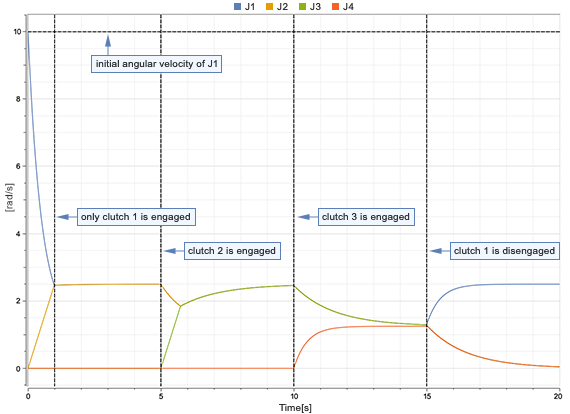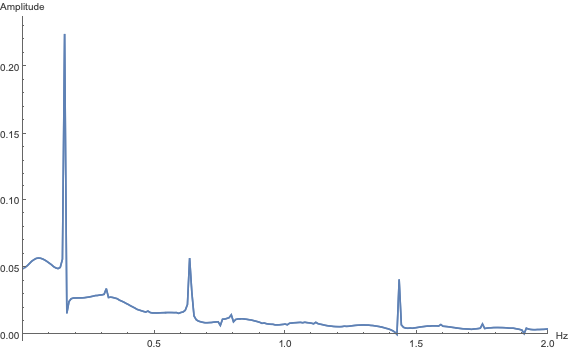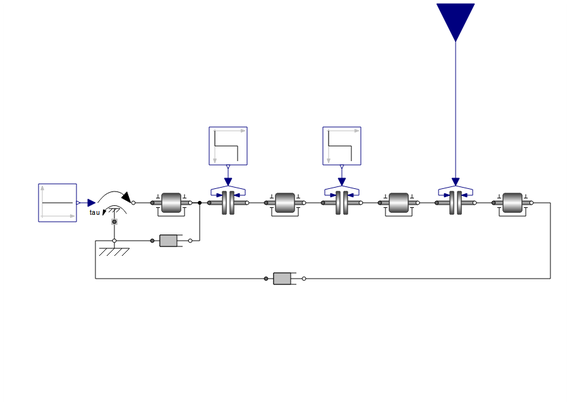Coupled Clutches
By coupling clutches together, a variable structure drivetrain can be achieved. With different clutches engaged at different times, torque is supplied to different parts of the system.
To run this example, you'll need
The latest versions of System Modeler and Mathematica.
Please make a selection:
Get afree trial Continue
with download
The Model
The model consists of a series of coupled inertia components separated by clutches between them. When a clutch is engaged, friction will be present between two adjacent inertia components, causing them to transfer momentum to each other. The first and the last inertia components are damped by rotational dampers, and a constant torque is applied to the first inertia.
Simulation
By simulating the model, the angular velocities of the inertias over time can be studied. The effect of engaging the different clutches can be seen in the plot below.

After 5 seconds, the second clutch from the left is engaged, followed by the third after 10 seconds. After 15 seconds, the first clutch is disengaged.
Fully Customizable Model Plots
Add and store your findings using plot markers, plot labels and many more.
Analysis
By applying a sinusoidal function to the last clutch, a pattern emerges that can be studied using Fourier analysis.

Fourier analysis applied on the acceleration signal of the last inertia when the final clutch is applied using a sinusoidal force.
Unlimited Analysis
Bring the full power of the Wolfram Language to your model analysis.
Wolfram System Modeler
Try
Buy
System Modeler is available in English
and Japanese
on Windows, macOS & Linux »
Questions? Comments? Contact a Wolfram expert »
